A narrow stream of crystal clear water gushes past our feet and disappears into the half-moon opening of the ice cave nearby. ‘Can I drink this?,’ I ask our guide. ‘Of course,’ he beams. ‘You can drink the water anywhere in Iceland. Except if you see a horse pissing in it. Then just make sure you drink upstream’.
The earthy humour is a welcome dose of reality given our fantastical surroundings. All around us, walls of crystalline ice soar into the air, twinkling a thousand shades of blue. Overhead, a huge arc of ice drips a steady rain onto the rocks below while the melting glacier above feeds the rushing cascade with freshly-melted, thousand-year-old water.
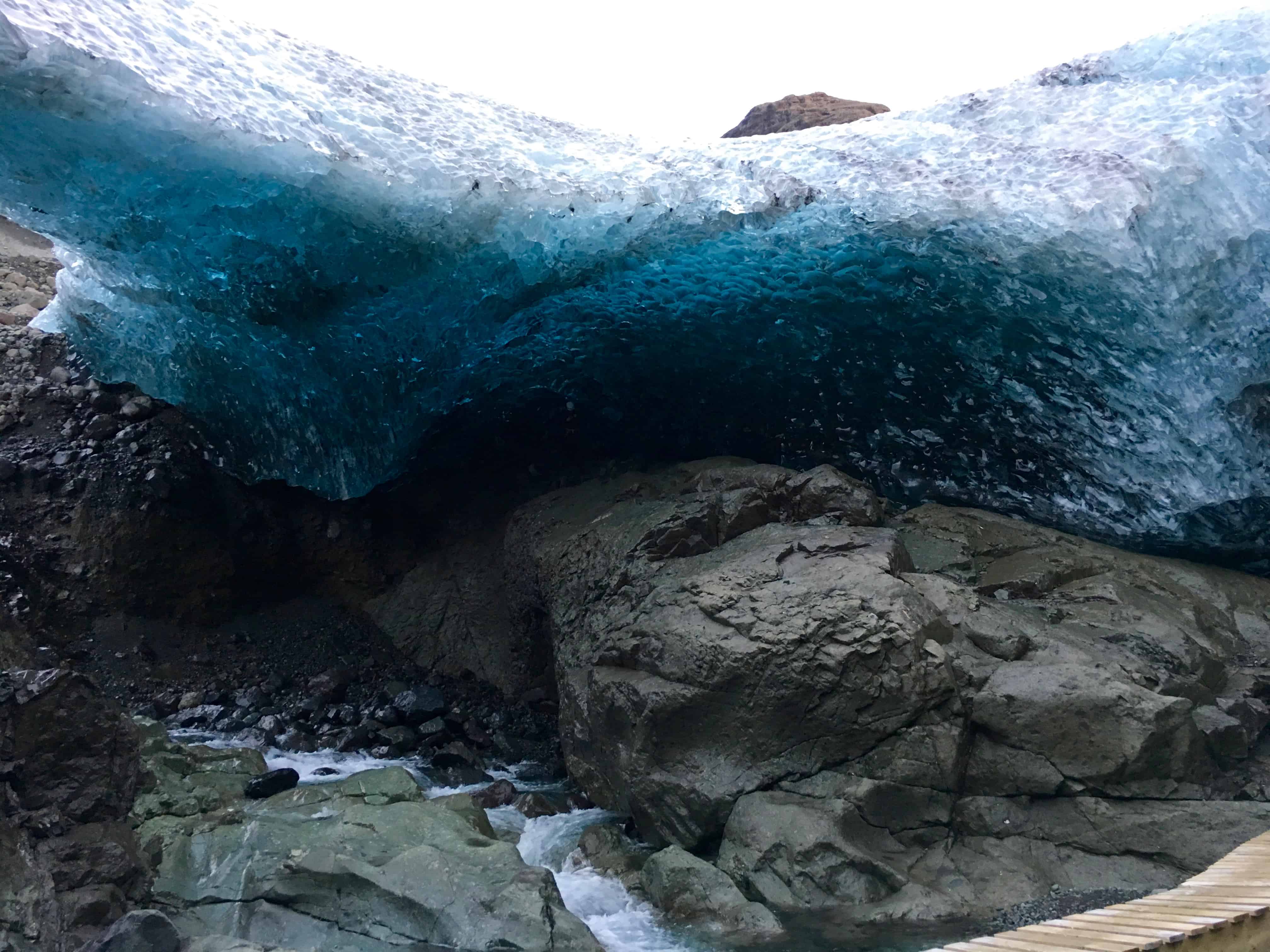
We’re at the entrance to the Waterfall Ice Cave, a cavern burrowing into the terminus of an outlet glacier on the vast Vatnajökull ice cap in south-east Iceland.
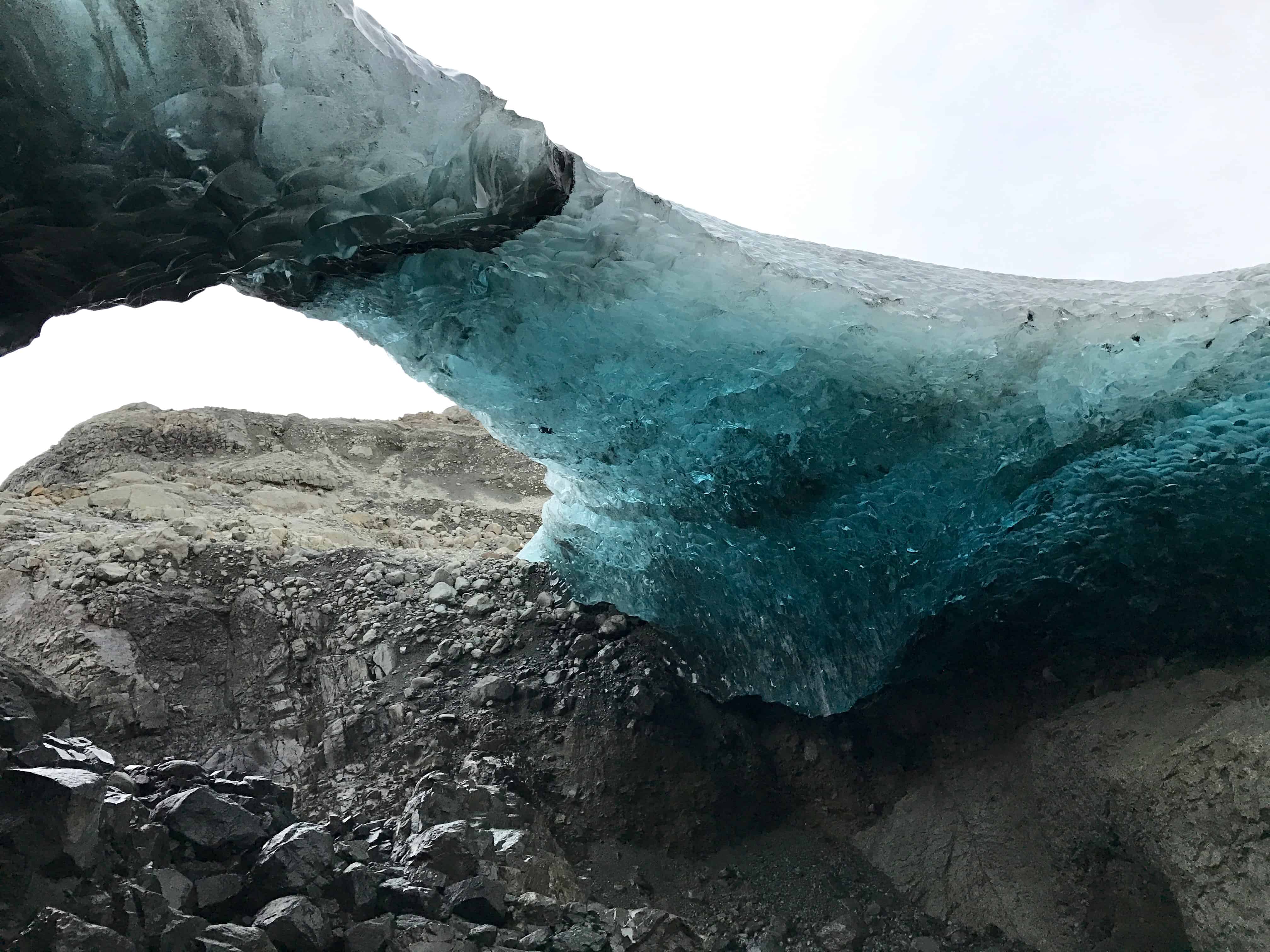
Iceland’s magical ice caves can only be visited in the winter months, when running meltwaters under glaciers form temporary, otherwordly hollows at their icy edge.
Like all of the world’s glaciers, the tongue of ice we’re visiting today is retreating further every year. With each new winter, the Waterfall Ice Cave has a new shape and structure for our guides to scout out and navigate.
Last season, the entrance to the Waterfall Ice Cave was further up the glacier and opened into a large, covered ice hall. This year, the ceiling of the hall has melted away and we need crampons, ropes and carabiner hooks to hike down into the great ice arena, now open to the sky.
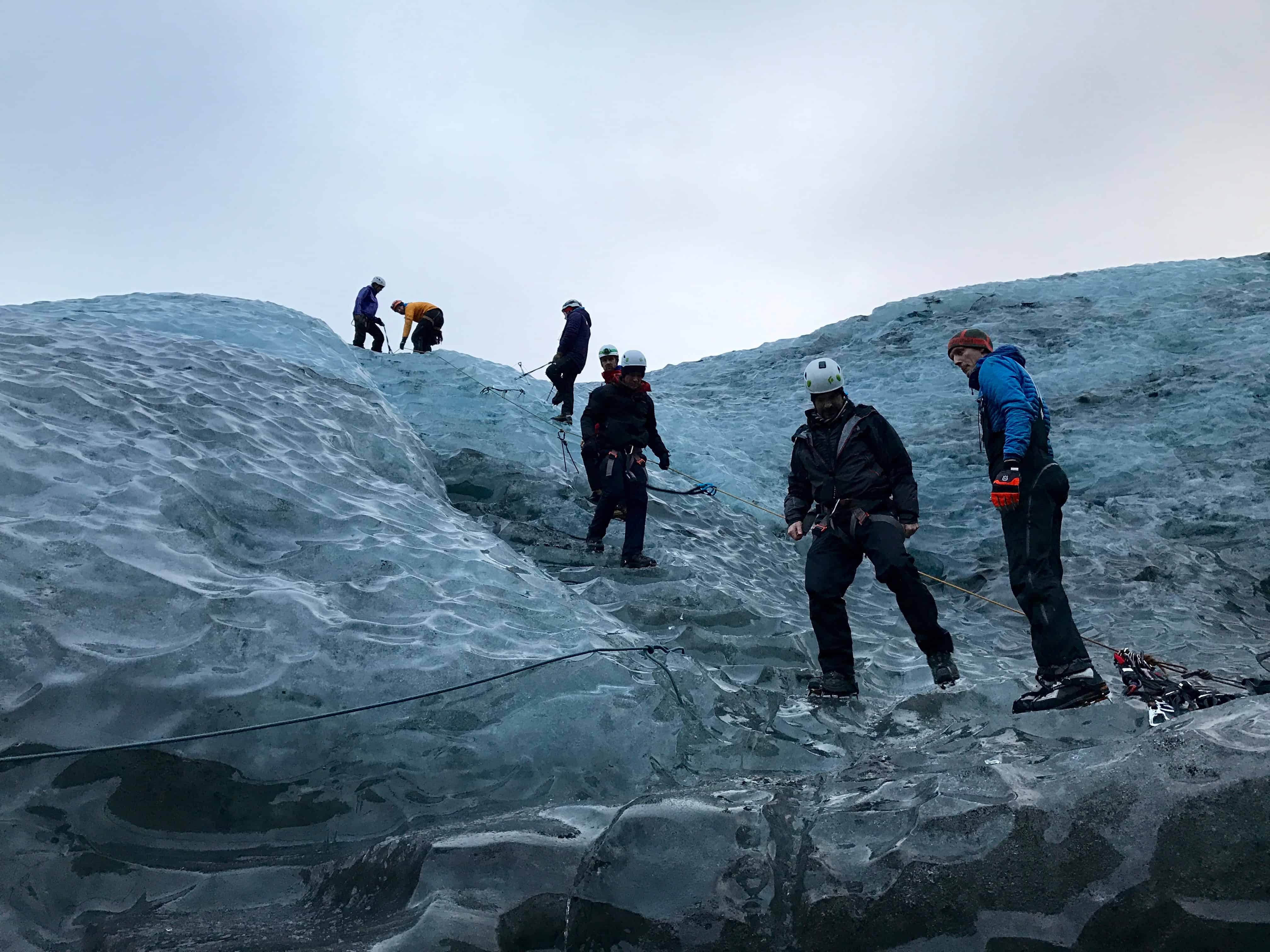
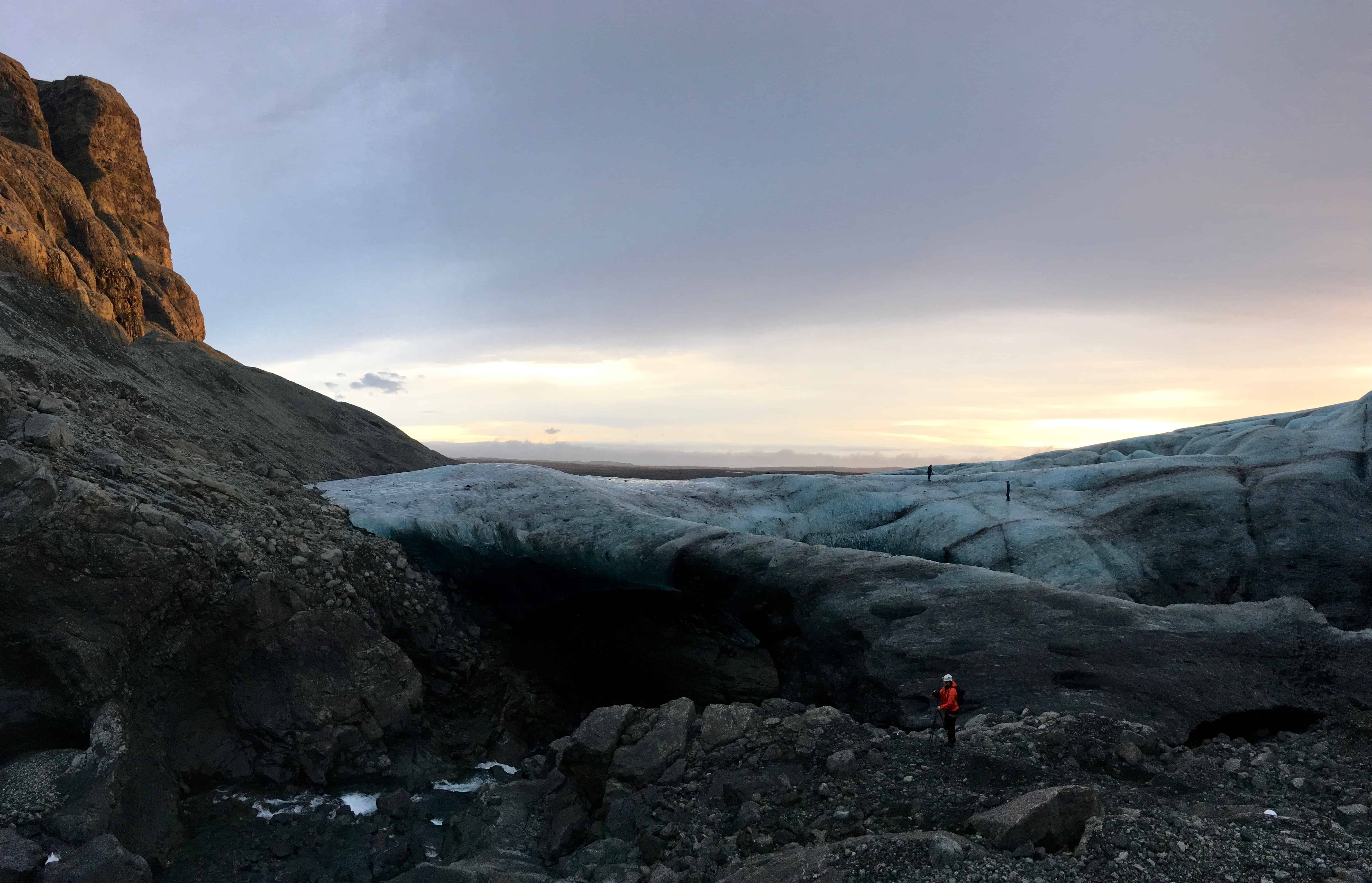
Two tiny semi-circular openings off the icy amphitheatre mark the cave’s new gateways. We crouch down and make our way into the glittering grotto. The low walls and ceiling are pure ice, an upside-down sea of undulating, translucent blue waves, smoothed to perfection by the glacial river.
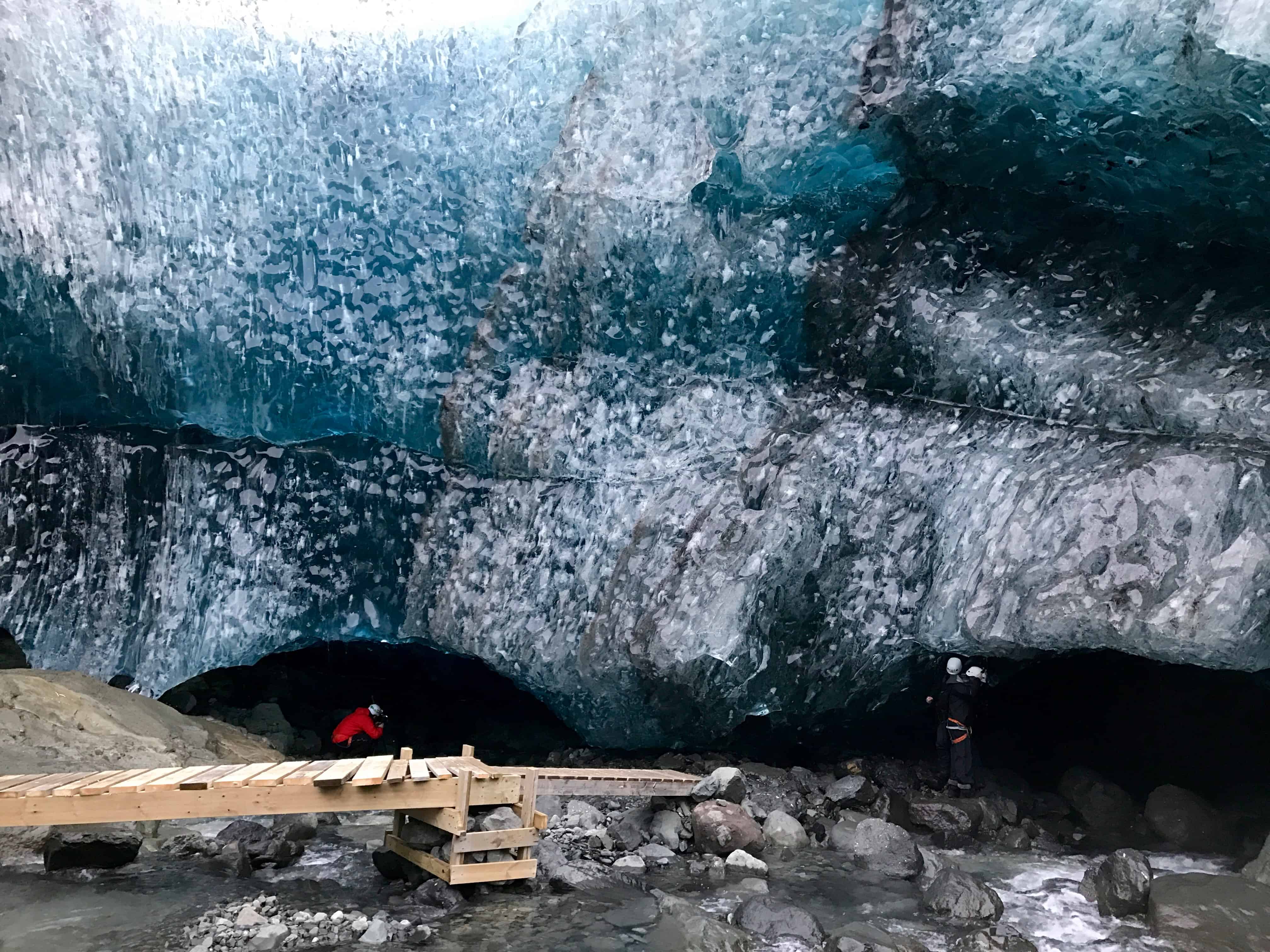
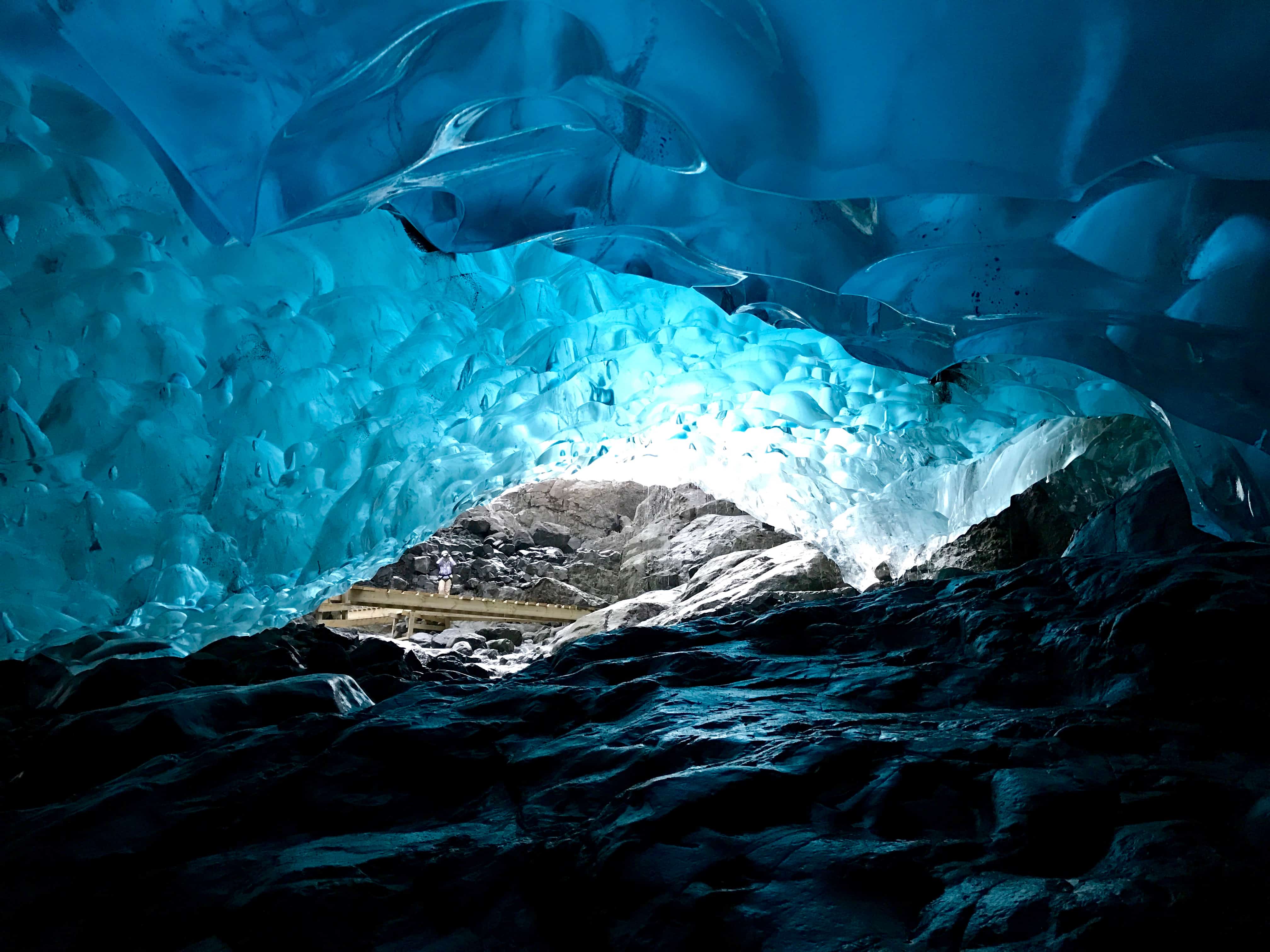
It’s an extraordinary scene, but a brief one in the long story of the ice cap. By next winter, the cave will have transformed yet again.
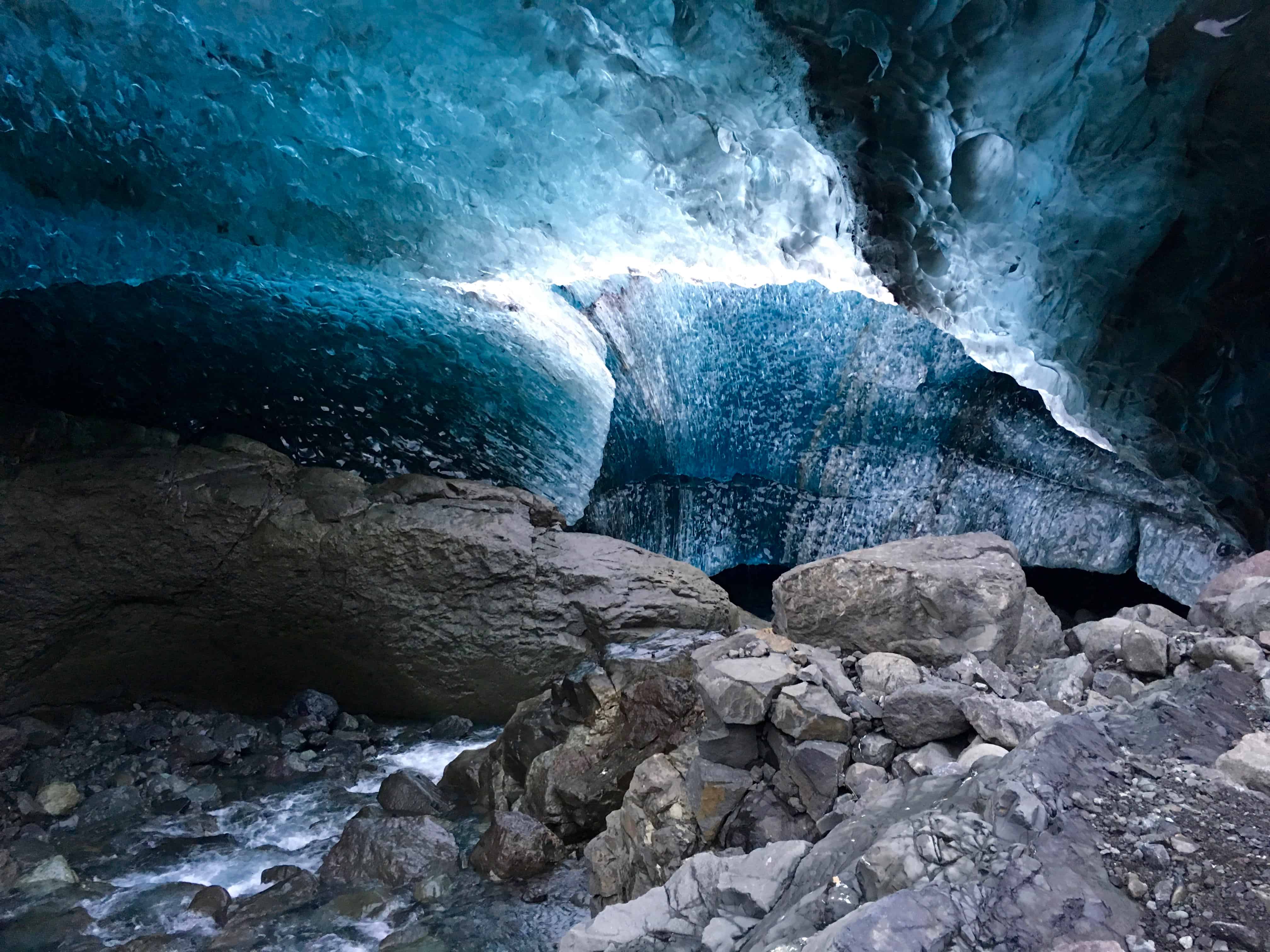
As we climb back up onto the glacier, we emerge to find a spectacular sunset underway. It’s barely 3.30pm but the low winter sun has turned the mountains behind us rose gold and set the clouds above aflame. Shades of red and yellow glint off the misty grey of the vast glacial plains, creating a scene well-deserving of Iceland’s nickname: the Land of Fire and Ice.
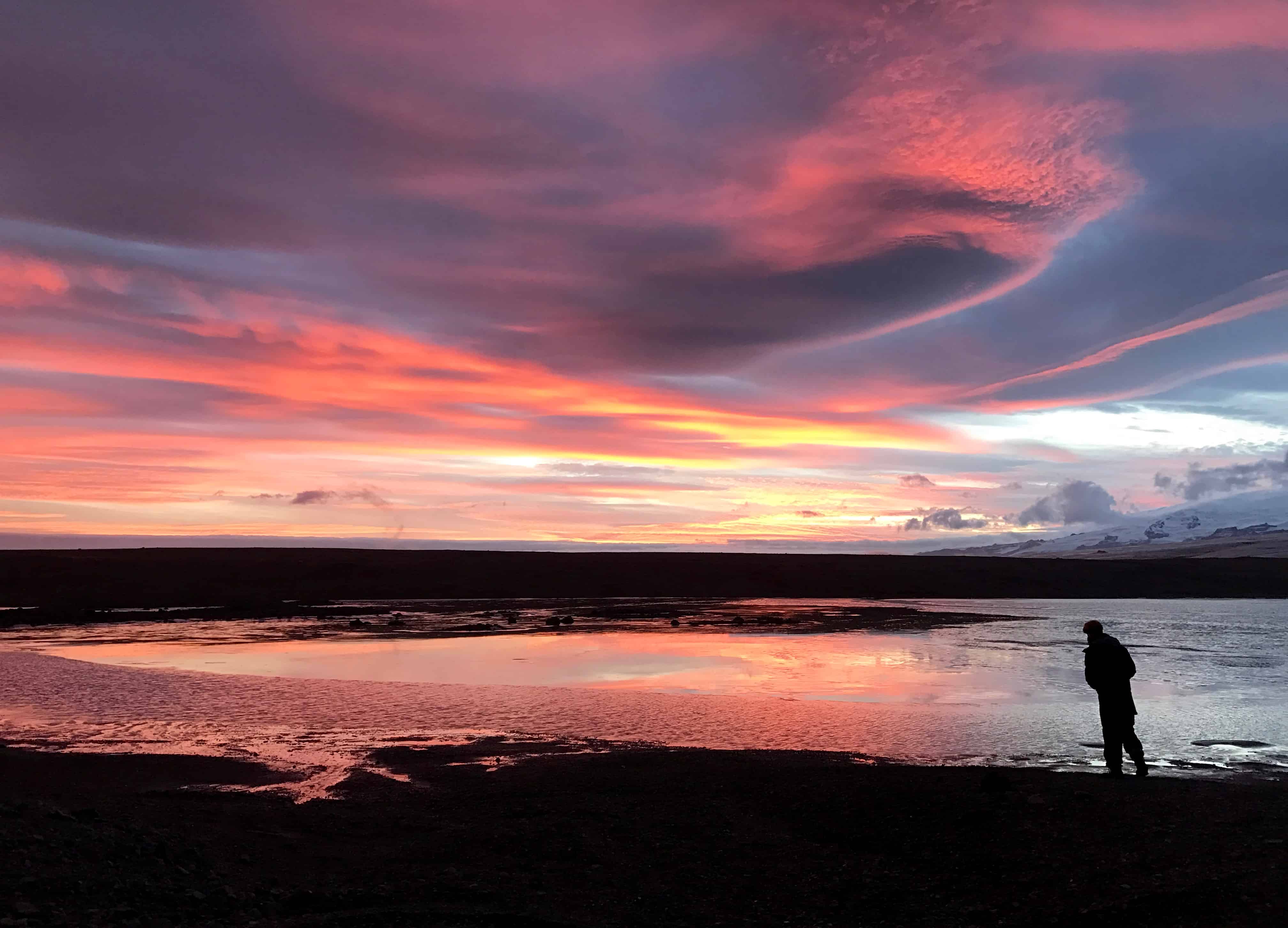
We wind up the day back where we started, by the shores of nearby Jökulsárlón Lagoon. Great hunks of luminous, thousand-year-old ice hulk on the surface in the fading light.
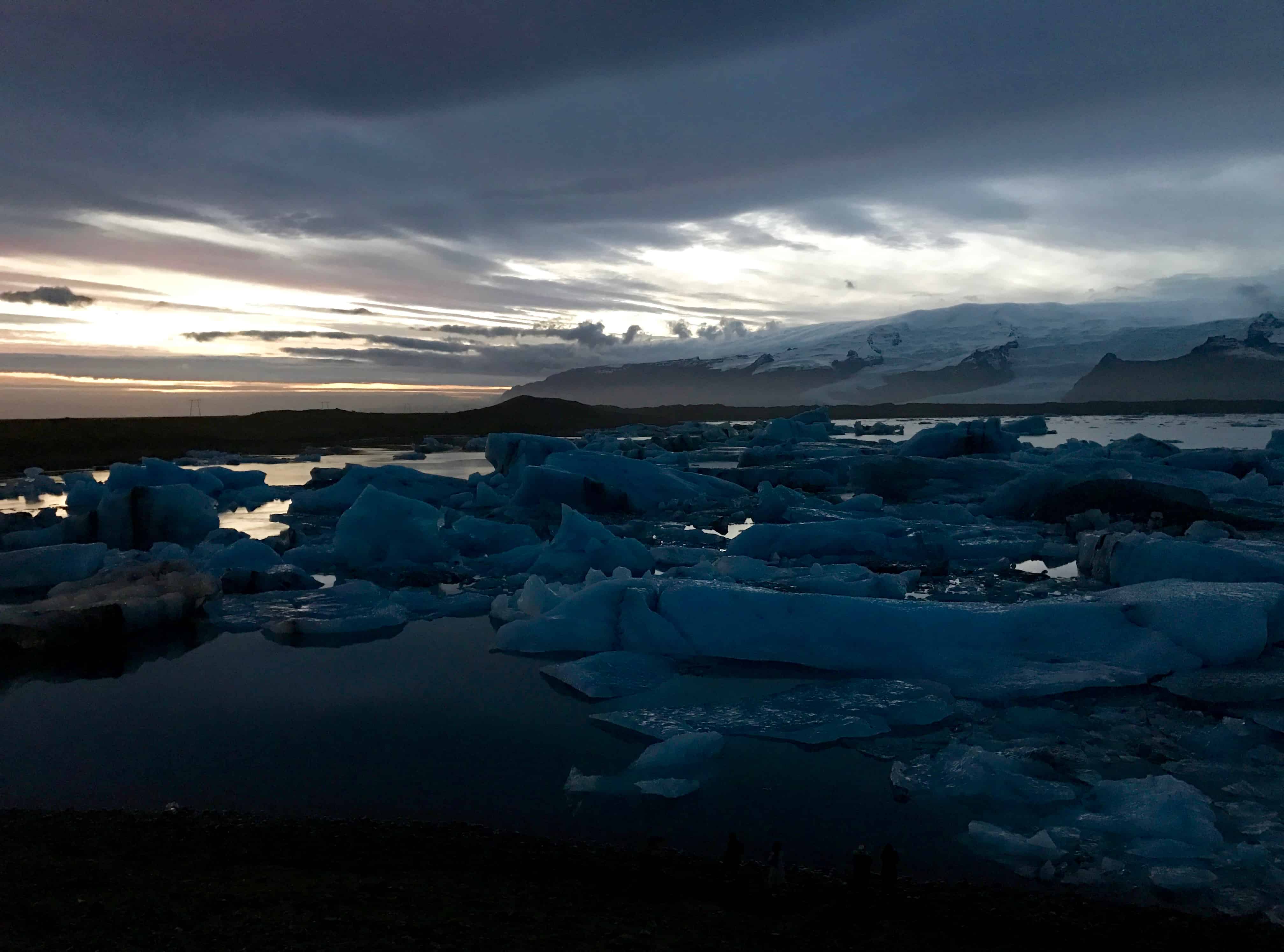
The icebergs – calvings from the terminus of the Breiðamerkurjökull glacier, another arm of Vatnajökull – can drift in the lagoon for years before finally making their way to the sea.
Earlier in the day, we wandered the edge of this surreal inlet, navigating our way around great chunks of stranded, sculpted ice. Just offshore, curious seals poked their heads above the frigid waters to watch us.
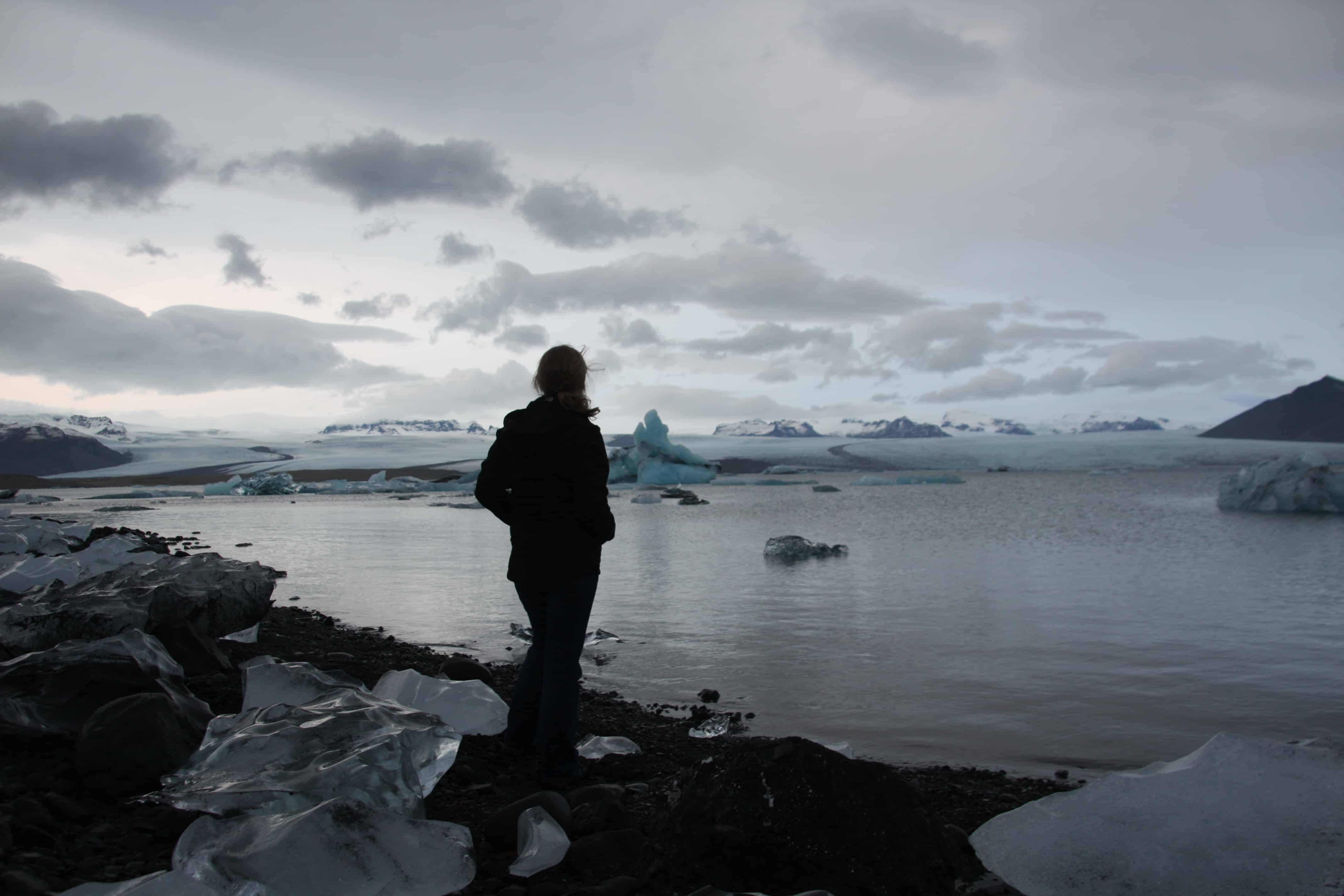
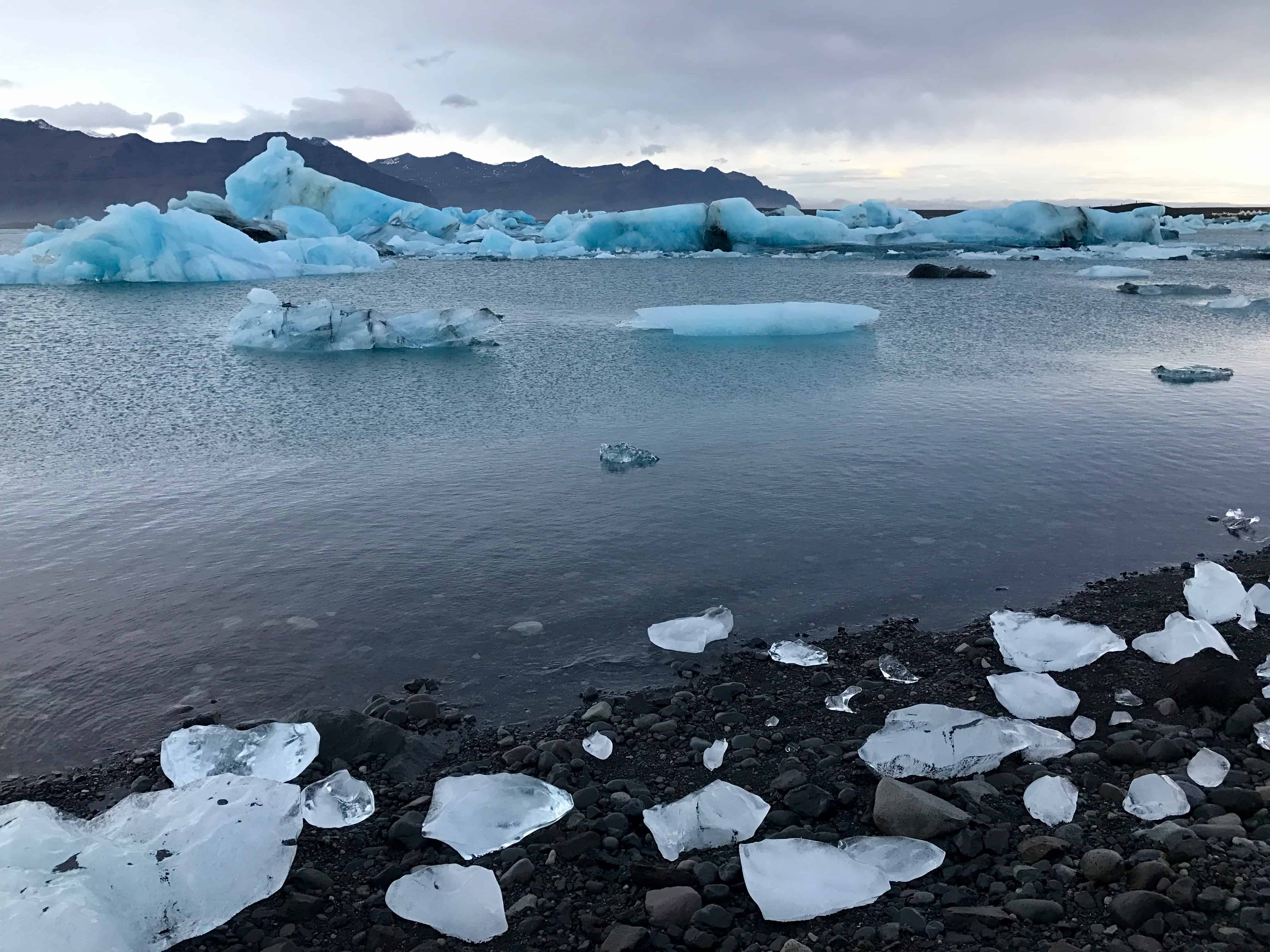
Like the ice cave, Jökulsárlón is a spectacularly beautiful, peaceful place, one we wish we had more time to give.
As the last light of day streaks the sky, we take in the commanding scene and sip from a bottle of crisp meltwater we collected from a stream near the glacier. It’s pristine and pure, just like this enchanting place. And yes, we checked for horses first.
Good to know
Visiting an ice cave: You can only visit an ice cave in Iceland in the company of expert guides. A number of companies run ice cave tours (Vatnajökull glacier in the south-east and Langjökull glacier in the south-west are both popular ice cave locations), however the season is short (around November to March depending on weather) and tours book out quick, so plan ahead. We travelled with Iceguide to Vatnajökull and had a great time.
Getting there: We joined our ice cave tour at the Jökulsárlón Lagoon car park. Google Maps puts Jökulsárlón at 4.5-hours’ drive from Reykjavik – a long haul that will be undertaken almost completely in the dark in winter. We travelled to the lagoon from Skogafoss – a 2-hour-45-minute journey on the map that actually took closer to 4-hours (granted, once dawn broke, we stopped often for pics). The take-out: Give yourself plenty of time, and then some, no matter where you’re coming from.
Tip: Save yourself the epic drive and stay close to Jökulsárlón the night before or after your ice cave visit. Given the short days, staying nearby will give you more time to explore the beautiful lagoon, take in the icebergs from different parts of the lagoon, and visit the beach where the bergs reach the sea, while it’s still light.
Have you visited an ice cave? Tell us about it below!
